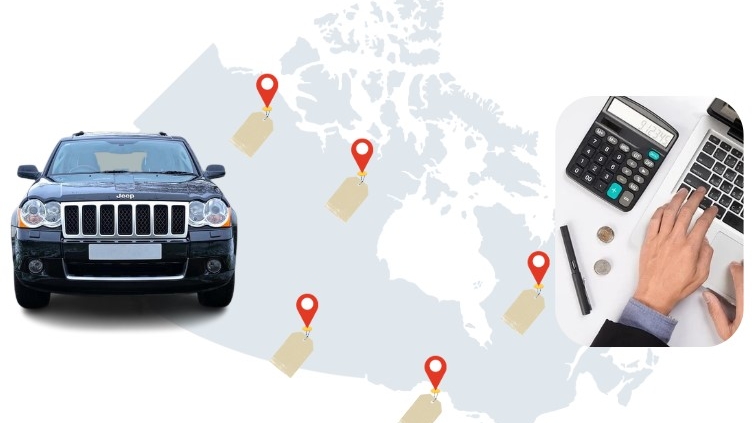How to Find the Best Used Car Online: A Smarter, Safer Approach

Shopping for a used car today looks very different than it did a decade ago. Instead of walking onto a dealership lot with little knowledge of pricing or available models, most buyers now start their search online, comparing listings, reading vehicle history reports, and evaluating market trends before ever setting foot in a dealership or meeting a private seller.
With access to online marketplaces, dealership websites, and vehicle history tools, buyers are more informed than ever. They compare models, filter listings by price and features, and even research ownership and accident history. However, with so many options at their fingertips, buyers must also be cautious—hidden issues, misleading ads, and scams are still common in the used car market.
The key to a successful purchase is not just finding the right car, but also knowing where to look, verifying listings, and making informed decisions. Whether purchasing from a dealership or a private seller, understanding how to research, compare, and negotiate can mean the difference between a great deal and a costly mistake. This guide will help you navigate the online car market, ensuring that you find a reliable vehicle at a fair price while avoiding common pitfalls.
Start with Local Dealership Websites
Many dealerships maintain up-to-date online inventories, allowing buyers to browse available cars, check features, and compare prices before visiting in person. Searching through dealer websites has several advantages:
- Convenience – Browse listings outside of dealership hours.
- Better Selection – Some dealerships list vehicles from multiple locations.
- Financing and Trade-In Options – Dealers often provide financing details and trade-in estimates.
Before visiting, check whether the dealer offers a certified pre-owned (CPO) program, which may include warranties and inspections for added peace of mind.
Explore Online Car Listing Platforms
Dedicated online marketplaces make it easy to compare listings from dealerships and private sellers. Some of the top sites include:
- autoTRADER.ca – One of Canada’s largest car marketplaces.
- Kijiji Autos – Offers both dealership and private listings with history report options.
- Auto123.com and Wheels.ca – Feature-rich platforms with reviews and comparisons.
- Craigslist and Facebook Marketplace – Useful for private sales but require caution to avoid scams.
- eBay Motors – Ideal for finding rare models, but consider location and shipping costs.
Run a VinAudit Canada vehicle history report, to check details about past accidents, ownership records, title status, and more.
Do Not Overlook Traditional Classifieds and Newspapers
While national listing sites offer a vast selection, local sources can sometimes lead to better deals on vehicles that may not be widely advertised.
- Community Newspapers – Many city newspapers have an online classified section with local car listings.
- Used Car Buying Guides – Some print auto magazines also publish their listings online.
Use Online Buying Guides and Pricing Tools
Understanding market pricing is key to negotiating the best deal. In addition to browsing listings, buyers should take advantage of online pricing tools and buying guides.
- VinAudit Canada Market Value Tool – Provides pricing insights based on actual vehicle sales data.
- Canadian Black Book and Kelley Blue Book (KBB) – Estimate resale values based on make, model, and condition.
- Vehicle History Reports – Help identify accident history, title status, and previous ownership.
Stay Safe When Buying Online
The convenience of online car shopping also comes with risks. To ensure a safe transaction, buyers should watch out for common warning signs:
- Unrealistically Low Prices – If a deal seems too good to be true, it likely is.
- Sellers Who Refuse to Meet in Person – Always inspect the car before making any payment.
- Requests for Deposits or Wire Transfers – Fraudulent sellers often ask for money upfront.
- Fake Vehicle History Reports – Always get a trusted report from VinAudit Canada.
For added security, meet the seller in a public location, bring a friend or family member, and consider having a mechanic inspect the car before finalizing the purchase.
Final Thoughts: How to Find the Best Used Car Online
Finding a reliable used car requires careful research, patience, and attention to detail. Instead of settling for the first listing that looks promising, take the time to explore different sources, verify vehicle history, and compare pricing.
By browsing dealership websites, listing platforms, and local classifieds, buyers can expand their options and find competitive deals. Using pricing tools and history reports ensures that a car is fairly valued and free of hidden problems. Most importantly, staying cautious and following safety guidelines will help prevent scams and ensure a secure transaction.
Don’t risk buying a car with hidden issues—check its history today! Visit the Reports Section to check what a VinAudit Canada car history report covers.

